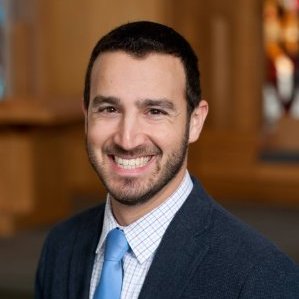Rabbi Rami Schwartzer

Though theory is compelling, narratives of real experiences substantiate these observations. Essayist Vivian Gornick told us first-hand what it means to be lonely in the unlikely setting of New York City, perhaps the paragon of civilization actualized (relocated New Yorker here). In her 1996 essay “On the Street: Nobody Watches, Everyone Performs”, she described being “jostled and bumped, catching the eye of the stranger, feeling the stranger’s touch,” all the while victim to the “loneliness [that] engulfs me like a dry heat.” Gornick knew that despite our growing urge to communicate with people across the globe, nevertheless we were becoming “a population in a permanent state of intermittent attachment.”
Postman, Gornick, and Putnam set the stage for a generation now seeking to find a home in an increasingly lonely world. If these circumstances created a generation of Jews more self-centered and elusive than their parents, they also gave rise to the spiritual yearnings that accompany such qualities. One of the earlier studies of millennials conducted by the Pew Research Center (2010) first described the generation as confident and connected. As it turns out, we may not be so confident or so well-connected, after all, though this should not come as a surprise. It is often noted that the disguise of a thousand Facebook friends covers a lonely reality backed by doubt, and the questions of “Who am I?” and “Where do I belong?” and “What is the purpose?” still remain in spite of — and even as a result of — our global connectedness. We have learned that the more plugged in we are, the more out of tune we might feel.
What matters now is how we respond as Jewish leaders, and I am afraid we have done so irresponsibly. As Rabbi Sid quoted, “most rabbis have answers to the questions that Jews no longer ask.” This insight of the late Rabbi Harold Schulweis should guide our work more. I am afraid that our programmatic efforts to engage the millennial generation in Jewish life are spot on, but a few years behind. When the people turned their attention to smartphones and social media, Jewish engagement followed on the same platforms because, well, that’s what the people were doing. Instead we should have considered the spiritual ruptures that were opening alongside those new technological phenomena. Rather than conforming our Jewish practice to the saturated market of hi-tech life, we ought to be delivering the most needed commodity there is: the wisdom and practice of our lo-tech tradition.
A Judaism that makes our world as big as the internet may be what we needed a few years ago. The question we are now on the cusp of asking is: how do I make my world smaller? The pendulum of history swings back; after an age of globalization we are trying to revert to simpler times. “Local” drives market strategy today because of its focus on the people who live near us. Seven iPhones into the iGeneration and we have access to information in every corner of the planet, yet we are no closer to understanding what inspires or frightens our next-door neighbors.
We crave intimacy. Classy events and exciting programs with flashy marketing might attract 300 people, but how many deep conversations did you have there? How many stories did you hear, or share yourself? How enriched were you by the 300 individuals you saw and stood next to? We are lonely in a sea of people, in a permanent state of intermittent attachment. Single and partnered no matter, we are thirsty for intimate spiritual connections. But when we measure the impact of our Jewish engagement strategies, we count numbers instead of digesting narratives, and in doing so we perpetuate the loneliness we claim to be combatting.
These are the principles that guide my work in the greater DC area, where single and partnered Jews and seekers gather for shabbat and holidays, talmud Torah (Jewish learning), and sacred conversation. There is no marketing strategy, no social media campaign, and no large-scale events aimed at attracting the masses. My work is relationship-first, helping people tap into the nourishment of community and the wisdom of our tradition. I spend my time meeting people one on one to understand who they are, and sharing with them a bit of my own story. We convene small interest-groups to co-create sacred Jewish moments around holidays and shabbat. We study Jewish texts in groups no larger than 10 in the intimate setting of a home. The paradox of our innovation is that there is no innovation. My job as a rabbi is to connect people to the most basic resource: other people. I do not spend time trying to figure out how to get more Jews in the door; I give them a place to figure out which door is right for them.
In a recent conversation with a dozen young Jews from my community, I asked them to share a story of an inspired Jewish moment in their life. Three threads weaved through all of their stories. They all recalled fondly (and craved desperately) Jewish experiences that provided knowledge, familiarity, and purpose. These qualities of course line up precisely with the propositions at the heart of Rabbi Sid’s analysis: chochma, kehillah, and kedusha.
__________________
Rabbi Rami Schwartzer is the founding director of Ramah Day Camp of Greater Washington, DC, and the rabbi of a new Jewish community for 20s and 30s in the greater DC area. He lives in Bethesda, MD with his wife Adina and their dog Arthur.

